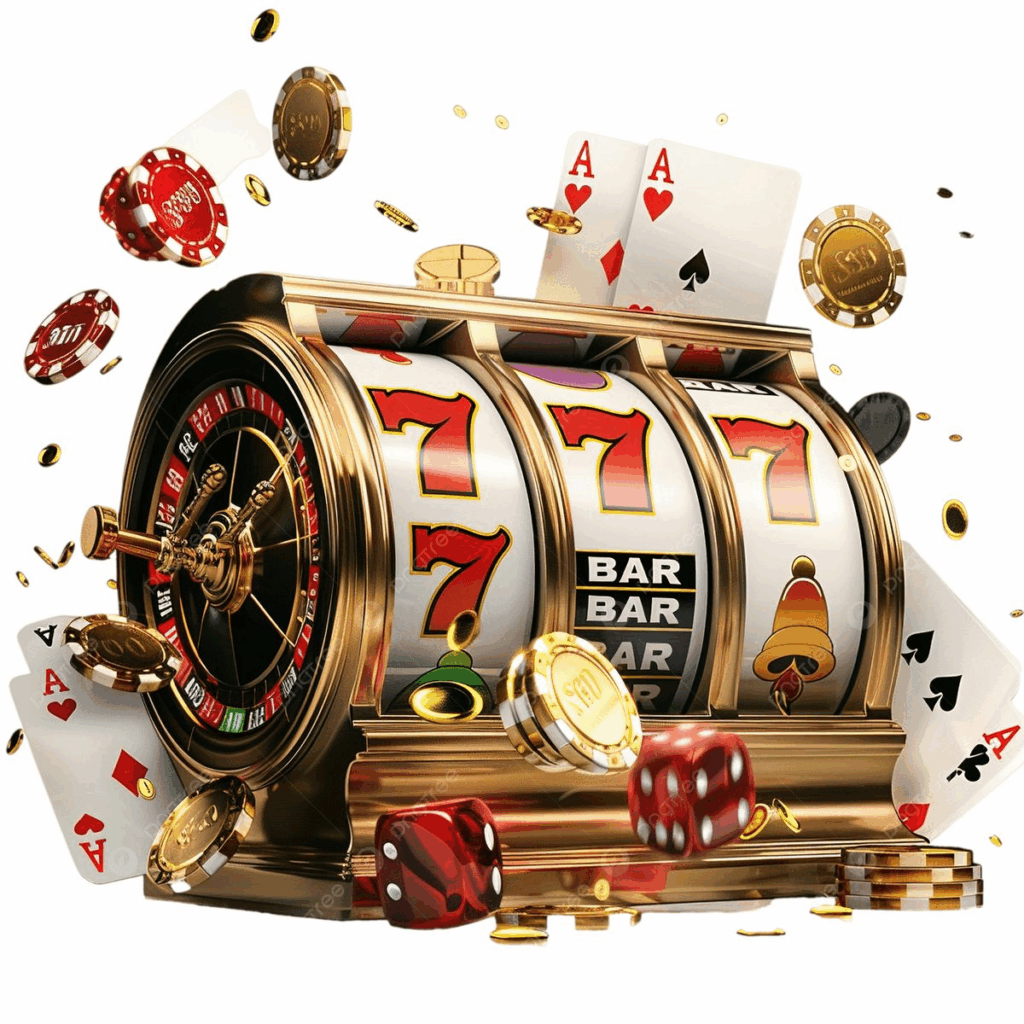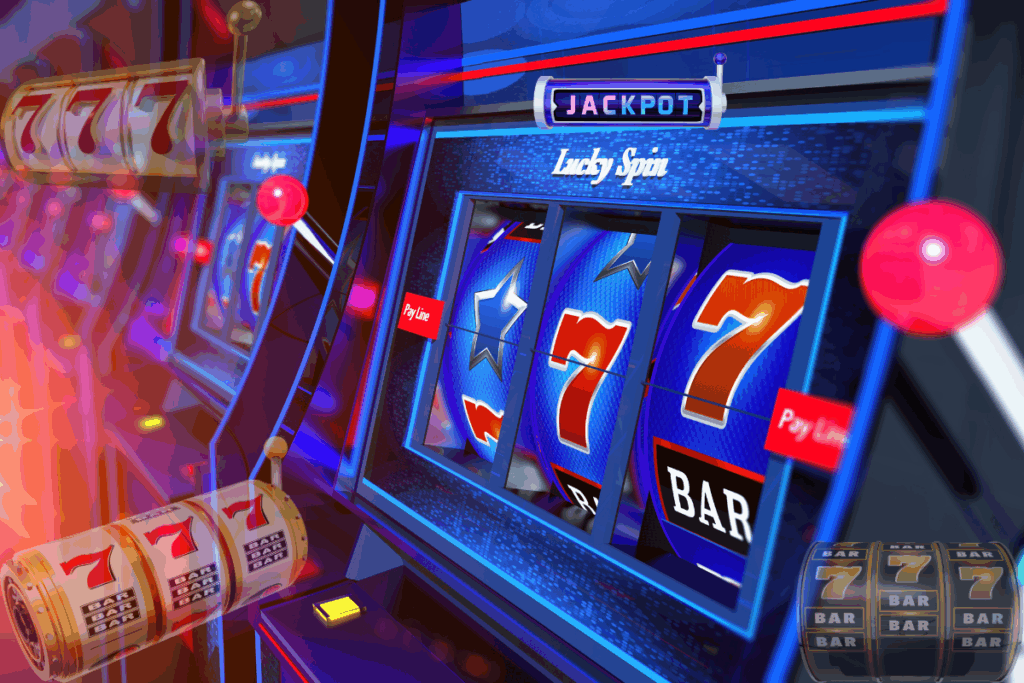Slot volatility, also known as variance, determines how often and how much a slot pays out. This guide breaks down low, medium, and high volatility slots to help you choose games that match your budget, risk tolerance, and playing style.
What Does Volatility Mean in Slots?
Slot volatility, or variance, refers to how often and much a slot game pays out. If you’ve ever wondered why some slots give you frequent small wins while others seem to pay nothing for a long time, only to hit a big win suddenly, that’s volatility.
Slots are generally classified into three volatility levels: low, medium, and high. Each type offers a different gameplay style depending on your goals, risk tolerance, and budget.
What is Slot Volatility?
Slot volatility, or variance, refers to the risk level associated with a slot game. It indicates how frequently a slot pays out and the size of those payouts. High volatility slots offer larger but less frequent wins, while low volatility slots provide smaller, more frequent payouts.
Why Understanding Volatility is Important
Knowing a slot’s volatility helps you set realistic expectations. It also allows you to pick games that fit your play style. If you’re a casual player with a small bankroll, playing a high-volatility slot might leave you frustrated. On the other hand, if you enjoy the excitement of chasing big wins and can handle long, dry spells, high-volatility games could be exactly what you want.
Low Volatility Slots
Low-volatility slots payout frequently but in smaller amounts. They’re ideal for players who want a steady stream of wins and longer play sessions without losing their money too quickly. They’re also perfect for beginners or those playing primarily for fun.
Popular low-volatility slots include Starburst, Blood Suckers, and Mega Joker. While these games rarely offer massive jackpots, they keep players engaged with consistent rewards.
If you have a budget of $50 and want to enjoy the game for an hour or more, low-volatility slots are your best bet.

Medium Volatility Slots
Medium variance slots strike a balance between risk and reward. They don’t pay out as often as low-volatility games, but the prizes are usually more satisfying when they do. These are great for players who want more excitement without risking large amounts of money.
Popular medium volatility games include Gonzo’s Quest, Thunderstruck II, and Dead or Alive 2. These titles often include interesting bonus features and free spins, making them more engaging.
If you’re an experienced player with a modest bankroll, medium volatility slots can provide the right mix of fun and reward.
High Volatility Slots
High variance slots offer the most significant potential rewards and the highest risk. These games can go through long periods without paying anything, but the wins can be life-changing when they do hit. They’re ideal for players with a larger budget and who are comfortable with big swings.
Examples include Book of Dead, Dead or Alive, and Bonanza. These games often have high maximum payouts, rare bonus rounds, and significant jackpots.
If you enjoy the thrill of chasing a big win and have the patience (and money) to ride out the dry spells, high-volatility slots might be the most rewarding choice.
Volatility Use Cases Based on Player Types
| Player Type | Ideal Volatility | Reason |
| Beginner | Low | Low-risk, more frequent wins |
| Budget-Conscious | Low or Medium | Balanced playtime and reward |
| Thrill-Seeker | High | Big wins, high-adrenaline |
| Strategic Player | Medium | Balance of skill and luck |
| High Roller | High | Large bankroll, risk tolerance |
Volatility vs. RTP: What’s the Difference?
It’s common for players to confuse volatility with RTP or Return to Player. While both relate to payouts, they measure different things. RTP tells you how much of your money you can expect to win back over time, usually expressed as a percentage.
For example, a slot with a 96% RTP means that, over the long term, the game returns $96 for every $100 wagered. Conversely, volatility tells you how that money is returned frequent small wins or rare big ones.
Two slots might have a 96% RTP, but one could pay small amounts regularly (low volatility), while the other offers rare, massive payouts (high volatility).

How to Identify a Slot’s Volatility
Not all games clearly state their volatility level, but there are a few ways to figure it out:
Check the paytable. High volatility slots often offer big payouts for matching symbols, but only if you hit rare combinations.
Visit the provider’s website. Game developers like NetEnt or Play’n GO sometimes list volatility ratings in their game descriptions.
Read player reviews. Experienced players usually note whether a slot is high or low volatility.
Try the game in demo mode. If you get a lot of small wins quickly, it’s likely low volatility. If you go many spins without a win but hit big occasionally, it’s high.
Matching Volatility to Your Budget and Play Style
Let’s say you have $100 to play with. If you choose a high-volatility game, you might not win anything for the first 50 spins. That can be discouraging if you’re not prepared for it. On the other hand, with a low volatility slot, your bankroll could last longer, giving you more entertainment and more chances to win, albeit smaller amounts.
High-volatility games are better suited to players who enjoy risk and have the budget to sustain it. Low-volatility games are ideal for casual players or those trying to meet wagering requirements on bonuses.
Real-Life Example
Let’s say James is a beginner with $50 to play. He chooses Book of Dead, a high volatility slot because he’s heard it has huge payouts. After 30 spins with no wins, he gets frustrated and stops playing.
If James had picked Starburst, a low-volatility game, he might have seen a steady stream of small wins that kept the game fun for longer. In this case, choosing the right volatility could have made a big difference in his experience.
Tools to Help You Choose
Several websites and tools help you understand a game’s volatility:
- SlotCatalog and AskGamblers provide detailed game information, including volatility levels.
- Game developer sites often list specs for each slot.
- YouTube demos can give you a feel for how a slot plays in real time.
Tips for Playing Based on Slot Volatility
You can bet slightly higher amounts for low volatility slots since you’ll likely win back small quantities often.
For high variation slots, use smaller bets to stretch your bankroll. The big win might take time to arrive.
Consider switching between volatility levels depending on your mood or bankroll size.
Set clear limits and expectations. Just because a slot has high potential doesn’t guarantee a big win.
Final Thoughts
Volatility is one of the most important factors when choosing a slot game. It affects how you play, how long, and how much you can expect to win or lose.
Understanding volatility and its application to different games allows you to make smarter choices that suit your budget and goals. Whether playing for fun, chasing a jackpot, or trying to make your money last, knowing the volatility level helps you get the most from your slot experience.
Frequently Asked Questions About Slot Volatility
What does slot volatility mean?
Slot volatility refers to how often a slot pays out and the size of those payouts. Low-variance games pay small wins frequently, while high-volatility slots pay less often but can deliver big prizes.
How does volatility affect my chances of winning?
Volatility doesn’t change the overall RTP (Return to Player), but it affects how often and how much you win in the short term. High-volatility games may have longer losing streaks but can hit big wins. Low-volatility games offer steady, smaller payouts.
Which volatility level is best for beginners?
Low-variance slots are ideal for beginners because they offer more frequent wins. This helps players learn the game and enjoy longer sessions without quickly exhausting their bankroll.
Can I win big on low-volatility slots?
Yes, but it’s rare. Low-volatility slots focus on consistency and smaller wins, while high-volatility games are more suitable for large jackpots.
How do I know the volatility of a slot?
Most providers list volatility on the game’s info page or paytable. If not stated, you can usually tell by playing the demo that frequent small wins suggest low volatility; rare, significant wins indicate high volatility.
Is RTP the same as volatility?
No. RTP is the theoretical percentage a slot pays back over time. Volatility affects the risk and reward pattern, not the long-term payout rate.
Are progressive jackpots high volatility?
Yes. Since they offer large payouts, the base game usually has fewer wins, making them highly volatile.
Should I choose high or low volatility based on my budget?
Yes. If you have a smaller bankroll, go for low or medium-volatility slots. High-volatility slots are better suited for players who can afford longer losing streaks while chasing big wins.
Does volatility influence bonus rounds?
Absolutely. In high volatility slots, big wins are often hidden in bonus features that may take time to trigger. In low volatility slots, bonuses come more often but tend to pay smaller amounts.
















